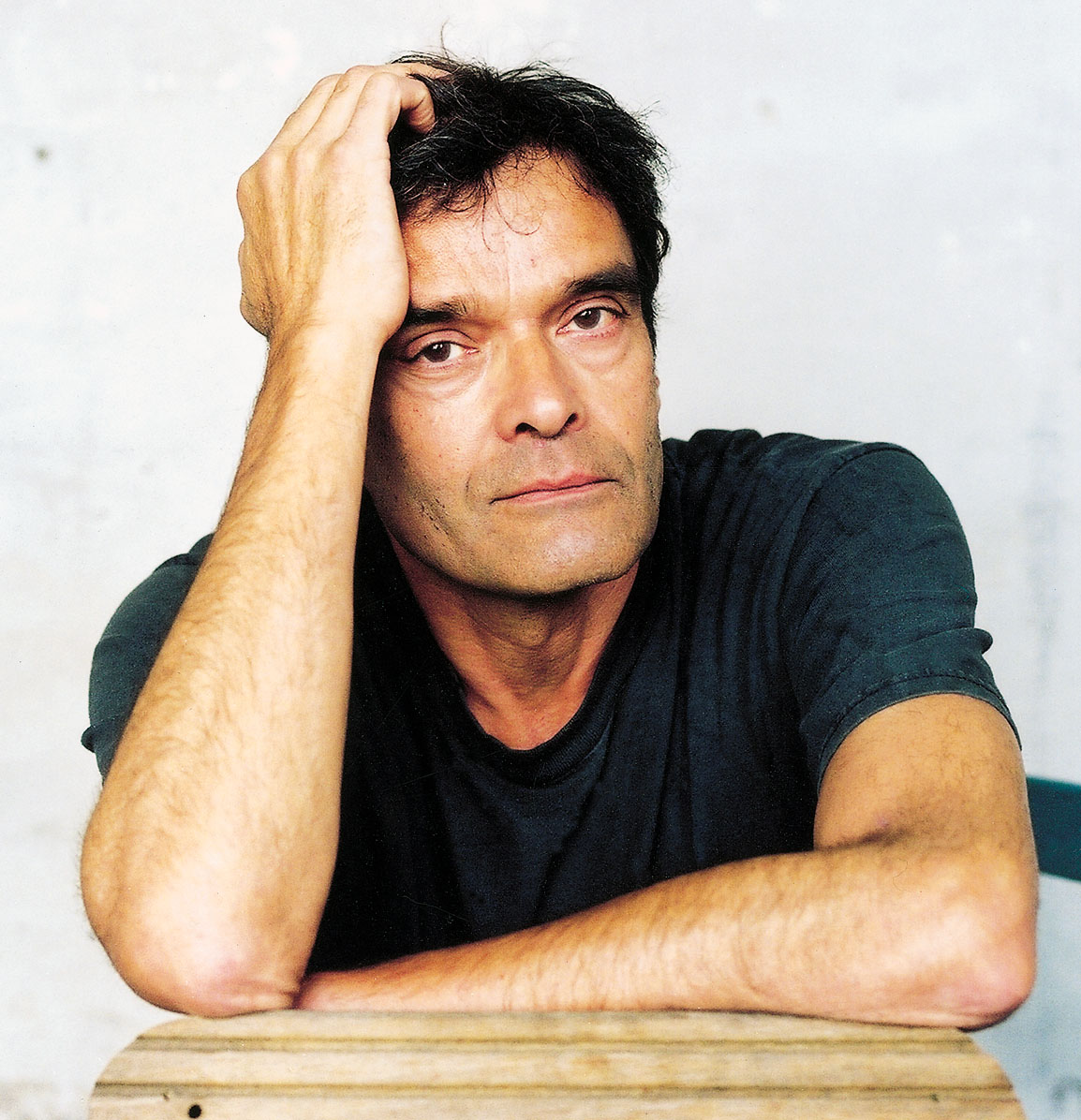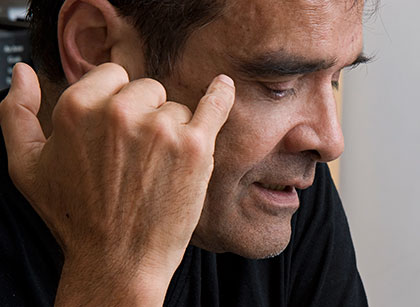Graham Hooper took time out to visit the Tate Modern and was drawn to an installation by Harun Farocki reflecting a century of industrial life
What is generally assumed to be the earliest example of film ever made was 120 years old last year, in 2015. Taken in France, lasting a mere 46 seconds, it depicts workers leaving a factory. It was shot by the Lumière brothers, across the street from their factory, looking straight into the building, with a stationary, eye-level vantage point, and using a cinematograph. Getting its name from the Greek meaning ‘writing in movement’, the cinematograph was a clever device that combined the functions of camera, developer and projector all in one box.
The footage depicts factory workers, mostly women as it happens, pouring out of the two exits pictured. The frame of the cinema view is divided roughly in half, with a door on the left and a larger gateway to the right. We appear to be watching with the end of an average working day, and the perhaps-hundred-or-so individuals leave the factory and walk out into the afternoon sun, to turn left or right. Interestingly, they are actually employees of the filmmakers, brothers Auguste and Louis, who had by then probably patented the device now being used to film them.
Though I am familiar with the footage, I am watching it again in Tate Modern, as part of a 12 screen video installation, called “Workers Leaving a Factory in 11 Decades” by the German filmmaker, Harun Farocki (1944 – 2014). As I stand here watching it I am consumed by it, utterly – it is the most profound experience I have had all year, by far.
Farocki, known for his social and political ‘documentaries’ using found footage, has gathered together film clips, from across the decades since the Lumière brothers made their own, of various workers leaving an array of different factory settings. The film sequences have been collated from diverse sources; there are silent German propaganda shorts from the 1930’s alongside a promotional video for a security gating company. Others are clips from feature films (such as Michelangelo Antonioni’s “Red Desert”) juxtaposed with newsreel of striking workers outside a Volkswagen Car Plant in the 1980’s. For all their difference they are unified by their central focus, simply that of workers leaving a factory.
Arranged chronologically (how else?) in a simple line of black, box-like screens, inside another black box that is the darkened gallery space, the video installation manages to be both threatening and magical; flickering lights and layered sounds, set against the formality and austerity of the space itself, and arrangement of the televisions within it. There is an oddness about this space and experience, and not just because it isn’t a painting or a sculpture as we might find elsewhere at Tate Modern. The title especially, “Workers Leaving a Factory in 11 decades”, is strange given that there are in fact 12 screens. The dates of each film, together spanning 110 years, are irregular in their spacing. Some are just 4 years apart whilst others have a gap of 13 years. Some decades are represented twice, though never more than that, whilst the 40’s, 70’s and 90’s are absent, and conspicuously so. Were each of these screens to be frames from a single strip of film, they would jump and jolt. Farocki could conceivably have chosen to have the clips blend together, each fading into the next, but the overall impact, even with a bigger projection, would have been diminished. As it is presented we can take in all the screens, though without any of the detail, but knowing and understanding the overall linking idea, or ‘zoom in’ to concentrate on a single illuminated rectangle. We can move back and forth, or rather from left to right, or right to left, to move forwards and backwards through time, and notice developments, look for comparisons. At times a pair of juxtaposed screens can appear to interact or synchronise in bizarre and provocative ways: a car leaves one screen then arrives in the next.
Farocki had once commented on in his interest in film’s ability to record its own history, and here we see this very history; from black and white to colour, for instance (on screen 9, “The Red Desert”, is very much in and about colour), and from silence into sound at the mid-way point. What also changes is the way factories are seen by the film-makers, and by the workers in their films. It is reflected in the names of the films too. The first two have very descriptive titles, mentioning simply the action and location, but then within a decade or so titles such as “Intolerance”, “Metropolis” and “Modern Times” are that much more metaphorical and emotive in tone. The factories develop, becoming increasingly industrial, large-scale and machine-driven. The Lumière factory appears positively rural, like a barn, with timber framing (and no real sense of any meaningful productivity) when seen alongside a giant West German car plant. The final film, in 2000, shows Bjork and Catherine Deneuve in a noisy, oppressive and dangerous environment, though the film title suggests the worker has now become a dancer (“Dancer in the Dark”, Lars Von Trier).
This last film, with singing and dancing, provides one of the only lighter depictions of factory life. Although the story itself is sad – heart-wrenchingly tragic actually – the scenes inside the factory show camaraderie, even frivolity. Besides that Charlie Chaplin, in his 1936 film, gives the viewer some reprieve with his trademark slapstick humour.
Even when the films aren’t overtly documentary in form, they are often downbeat in tone. It has to be said however that the installation is witty and intellectually engaging, and in ways that more than compensate for the subject matter. As with the installation that “shows scenes of the threshold between labour and leisure” I can enjoy the visual as well as the conceptual elements that are both at play and at work here.
This room in Tate Modern, perhaps 20 feet wide and 15 feet deep, is full of visitors, wandering freely. We are tucked away a little, in the ‘Citizens and States’ collection display, on level 2 of this vast department-store-of-an-art-gallery. In the darkness, which has two doorways, (either entrances or exits, or both, depending on your direction of travel) we are anonymous figures, silhouetted by the small screens obediently arranged in a neat row along the bottom of one wall. We can enter, watch a while, think and leave. We are free to come and go, and the videos are looped (repeating in totality every 35 minutes or so) so there is no beginning or end as such, other than the end (of the day) suggested by the leaving of the workers. In this dark space, devoid of daylight, it is almost as if we are inside the cinematograph itself, where it is always night-time. Even factories now operate throughout the night.
My first job on leaving school was in a local factory, soldering electrical components onto circuit boards. There was little concern for health and safety, by today’s standards at least. My fellow employees were overwhelmingly female, and many were students taking advantage of a holiday period to earn some extra cash, in low-paid and low-skilled employment. It was boring and depressing. Time seemed to slow down. There was little natural light either, which would have helped to orientate in terms of time of day. The noise and smell stayed with me almost until the next day, when I would get up again and return. I can still distinctly remember leaving the factory at the end of the day, or better still the week. Such delight, and sudden, utter freedom.
It may well be true that Great Britain no longer has the manufacturing base it once had and that now we are a nation of service industries. I’d like to think that my factory stint helped me resolve never to work in such a place again, to get on in life, get an education and better paid work – I’m not so sure though. My parents were the first in their families to get a university education, but they could have chosen to leave school at fourteen. Now young people must be ‘earning-or-learning’ until they are in their late teens.
When I do finally come to leave the room, I step out into an adjacent gallery space, into the light, and pass others going in. There isn’t the rhythm the films have, their regularity or uniformity. Although I am partially directed around the Tate, I have a degree of control and autonomy that is denied many factory workers. Today visitors are here for pleasure and quiet reflection. Many of them will be employees, employers even, and some unemployed no doubt. I wonder how the gallery assistants feel about this room?
Farocki’s installation is deceptively simple but a deeply insightful and hauntingly beautiful work. What it has to say will stay with me beyond the end of my day today, when all of us have left this building, and gone home, or out to work.
“Workers Leaving a Factory in 11 Decades”, Harun Farocki. Tate Modern – London
www.harunfarocki.de/installations/2000s/2006/workers-leaving-the-factory-in-eleven-decades.html





